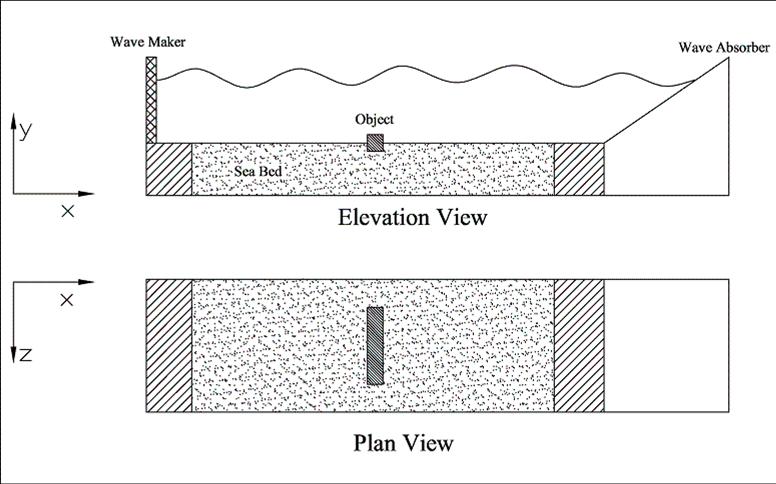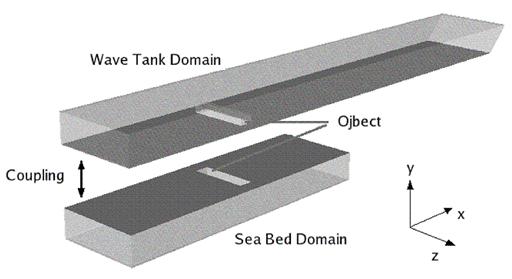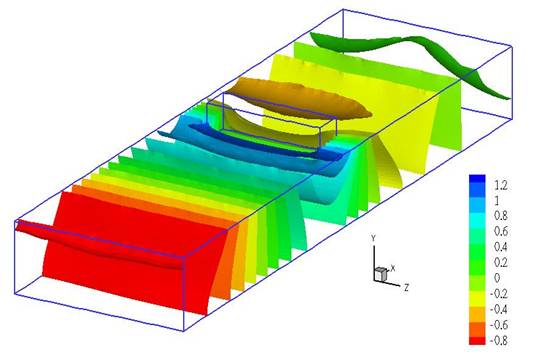OpenFOAM - Porous media response under waves
The pore
pressure in the porous media under wave actions will change with time.
A numerical model based on Biot consolidation theory with finite volume
method (FVM) is built to simulate the porous media response. The
following figures show the simulation results of the pore pressure
around an object inside the bed. Because of the presence of the object,
the flow field can not be described analytically using wave theory.
Numerical simulation is the only way to solve the problem.
The numerical model involves two parts. One part is for the free-surface wave flow field. VOF method is used to capture the free surface. k-epsilon model is used for the turbulence. The other part is the porous media response which is described above. Both parts should be coupled together. However, current model assumes a one-way coupling, i.e., only the wave flow field affects the porous media. What happens in the bed will not feedback to the wave field. Under some conditions, this assumption is not valid.
Reference: Liu and Garcia (2007), see Publications.
The numerical model involves two parts. One part is for the free-surface wave flow field. VOF method is used to capture the free surface. k-epsilon model is used for the turbulence. The other part is the porous media response which is described above. Both parts should be coupled together. However, current model assumes a one-way coupling, i.e., only the wave flow field affects the porous media. What happens in the bed will not feedback to the wave field. Under some conditions, this assumption is not valid.
Reference: Liu and Garcia (2007), see Publications.
 |
 |
 |
 |